Study, work or travel in the UK. British
culture and life.


Visit York
|
|
Study, work or travel in the UK. British
culture and life.
|
|
||
|
|
|
|
||
 |
||||
 |
||||
|
Visit York
|
||||
|
Sections:
|
Introduction |
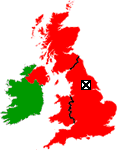 |
| York Minster | ||
| The streets of York | ||
| Vikings | ||
| City walls, gates and fortifications | ||
| National Railway Museum | ||
| River Ouse | ||
| Chocolate | ||
| Festivals | ||
| Guided tours | ||
| Further information | ||
| Links |
|
INTRODUCTION
|
 |
 |
York:
More Than a Guide (guide book) Publisher: Jarrold Publishing Date: January 2004 |
 |
York:
The Pitkin City Guides (guide book) Publisher: Jarrold Publishing Date: August 2007 |
 |
York
Insight Compact Guide (guide book) Publisher: APA Publications Pte Ltd Date: January 2007 |
 |
The
York Book (guide book) Publisher: Blue Bridge Date: November 2002 |
|
YORK MINSTER
|
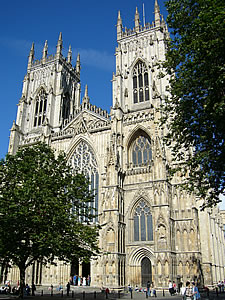 West Entrance |
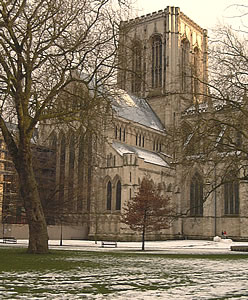 View from Deanery Gardens (in winter) |
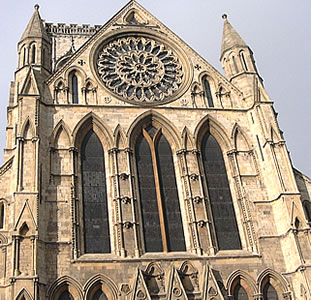 South Transept, including the Rose Window |
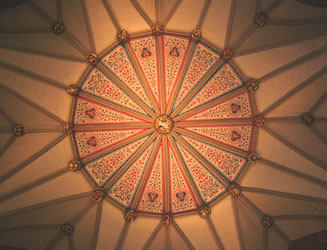 Chapter House ceiling |
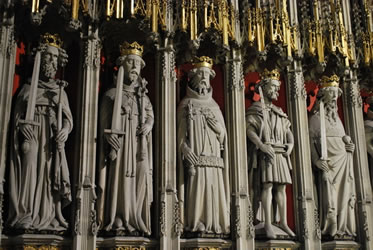 Kings of England |
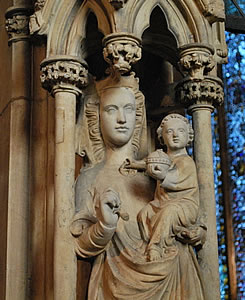 |
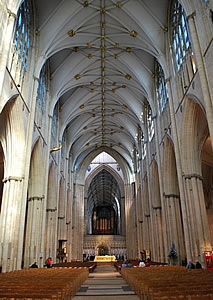 |
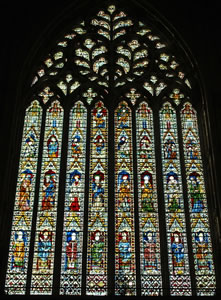 |
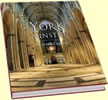 |
York
Minster: A Living Legacy Publisher: Third Millennium Information Date: June 2009 |
|
THE STREETS OF YORK
|
 |
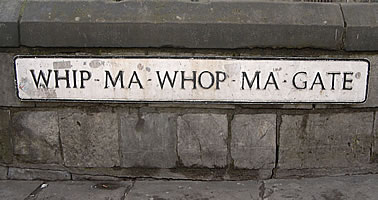 |
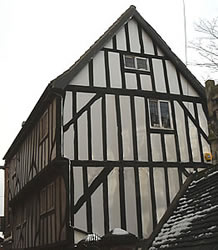 A medieval timber-framed house |
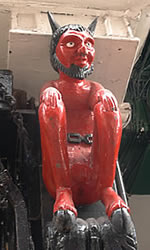 Printer's Devil (33 Stonegate) |
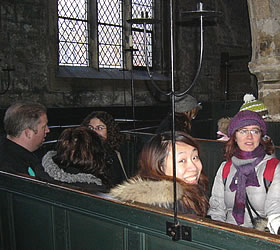 Box pews at Holy Trinity Church (off Goodramgate) |
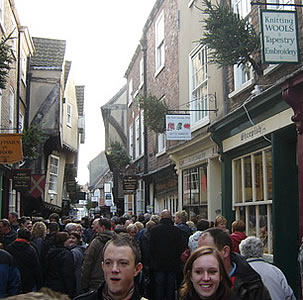 The Shambles: one of the popular shopping centres |
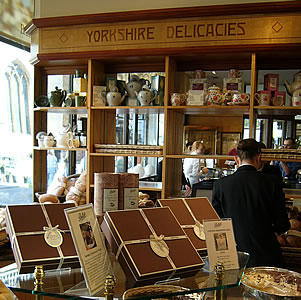 Shop in Betty's Tea Rooms |
|
VIKINGS
|
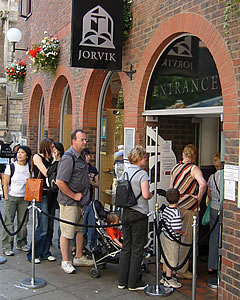 Entrance to the Jorvik Viking Centre |
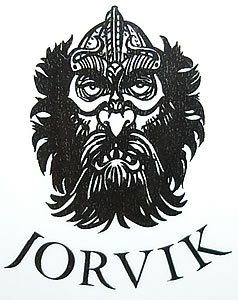 This image of the Viking warrior Erik Bloodaxe inspired the museum's logo |
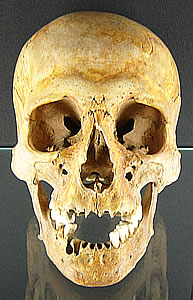 Archaeologists found skulls here: helping to learn about Viking life |
 |
Penguin
Historical Atlas of the Vikings Author: John Haywood Publisher: Penguin Books Ltd Date: June 1995 |
 |
The
Viking World Author: James Graham-Campbell Publisher: Frances Lincoln Publishers Date: May 2001 |
 |
The
Time Team Guide to the Archaelogical Sites of Britain & Ireland Author: Tim Taylor Publisher: Channel 4 Books Date: March 2005 |
|
CITY WALLS, GATES & FORTIFICATIONS
|
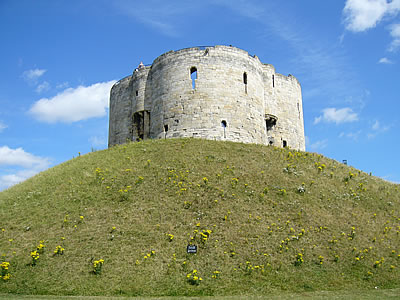 Clifford's Tower |
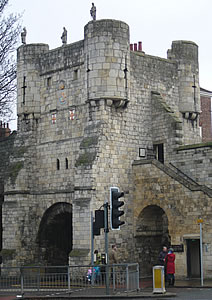 Bootham Bar: the oldest gateway |
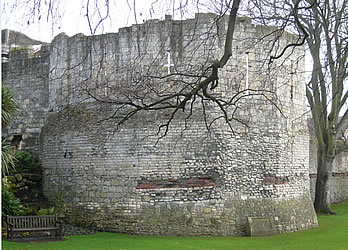 Multangular Tower (Museum Gardens) |
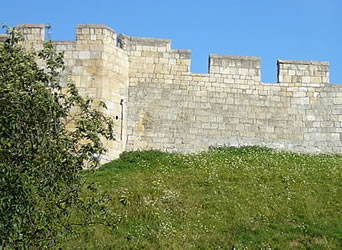 A section of the city wall near York train station |
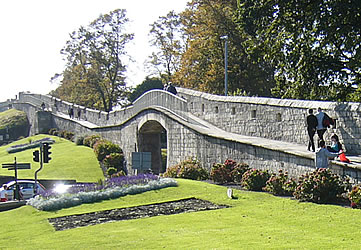 Walking along the walls |
|
NATIONAL RAILWAY MUSEUM
|
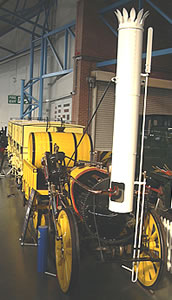 Stephenson's Rocket (1829) |
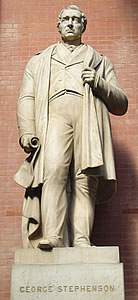 George Stephenson |
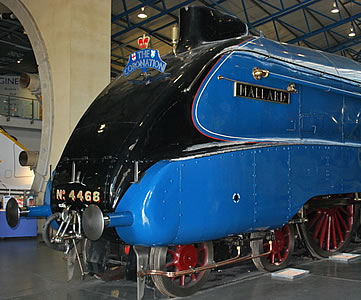 Mallard |
| National
Railway Museum Souvenir Guide Publisher: Science Museum Date: September 1999 |
 |
Mallard:
How the World Steam Speed Record Was Broken Author: Don Hale Publisher: Aurum Press Date: April 2005 |
|
YORK DUNGEON
|
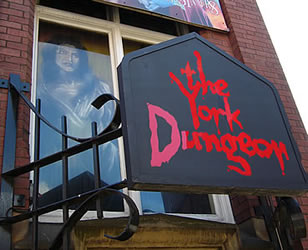 Entrance to the York Dungeon in Clifford Street |
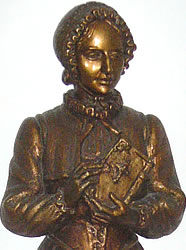 Margaret Clitherow |
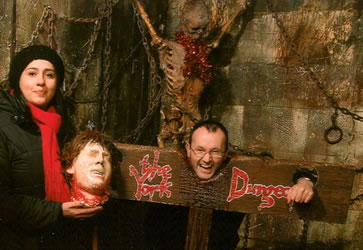 You can pose for a souvenir photo |
 |
Horrible
Histories: York Author: Terry Deary; Illustrator: Mike Phillips Publisher: Scholastic Date: September 2005 |
|
RIVER OUSE
|
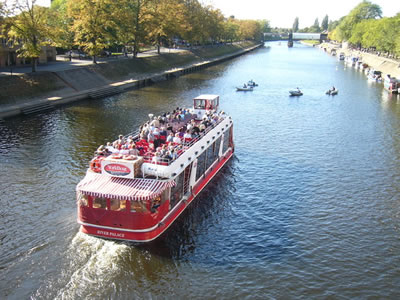 YorkBoat offers cruises starting from Lendal Bridge or from King's Staith |
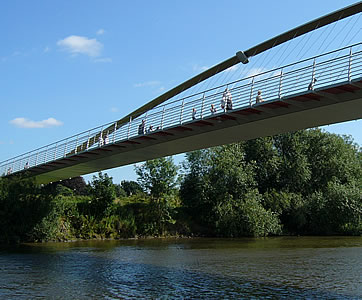 York's Millennium footbridge |
|
CHOCOLATE
|
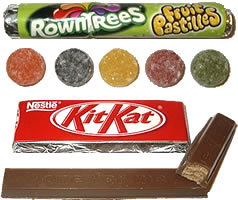 Fruit Pastilles and a KitKat |
 Smarties |
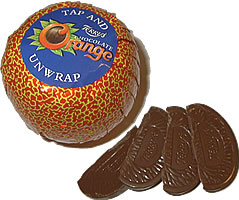 Terry's Chocolate Orange |
|
FESTIVALS
|
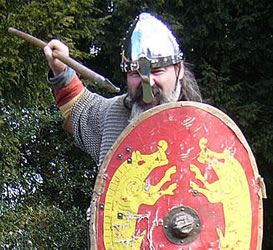 Demonstration of Viking fighting techniques |
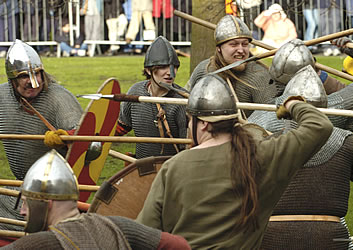 Battle re-enactment |
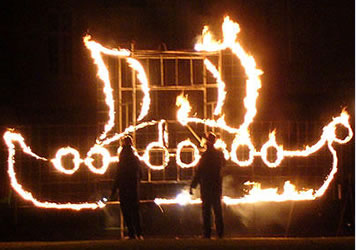 Fire display |
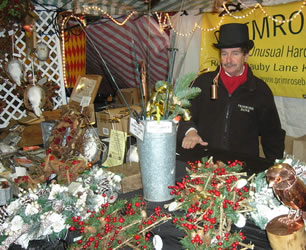 Christmas gifts and decorations are on sale |
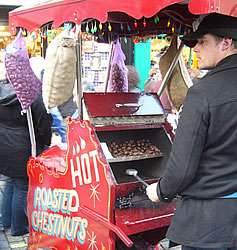 Roasted chestnuts |
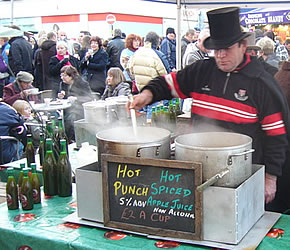 Hot drinks |
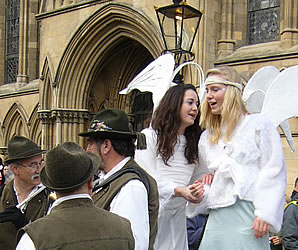 Procession of angels, starting outside York Minster |
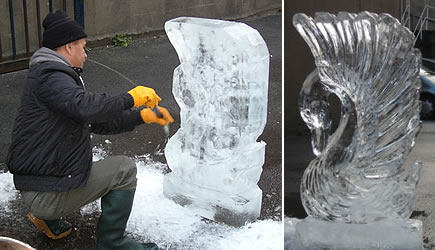 Ice sculptor at work ... and the finished sculpture |
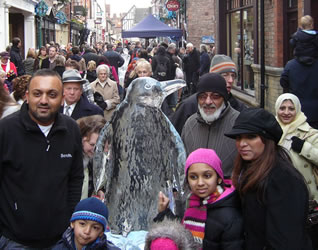 Family photo in front of a penguin ice sculpture |
|
GUIDED TOURS
|
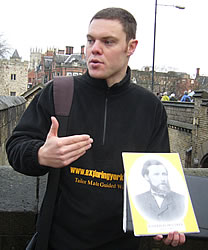 World Tour of York |
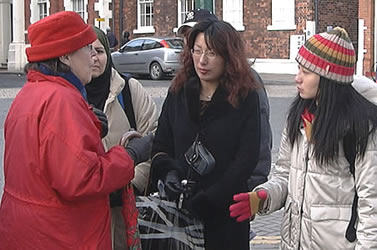 Volunteer guide |
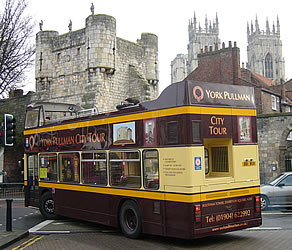 York Pullman city tour |
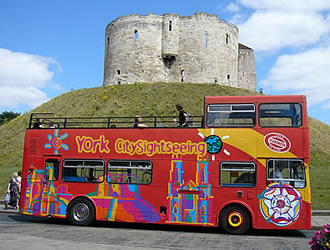 York City Sightseeing open-top bus tour |
|
FURTHER INFORMATION
|
|
Lonely Planet verdict: York
"York's historic stature and strategic importance has left the city with a rare weight of cultural and architectural heritage. Its city walls, built during the 13th century, are among the most impressive surviving medieval fortifications in Europe. They encompass a thriving, fascinating centre with narrow medieval streets and grand Georgian townhouses. Its glory is the biscuit-coloured shock of the minster, a Gothic cathedral on an immense scale. York's magnificence attracts millions of visitors, and July and August can be crowded" (extracts from "Lonely Planet Great Britain - 2003 edition", used with permission) |
|||
 |
Lonely
Planet Great Britain Publisher: Lonely Planet Publications Date: May 2009 |
 |
Lonely
Planet England Publisher: Lonely Planet Publications Date: March 2009 |
|
|
|